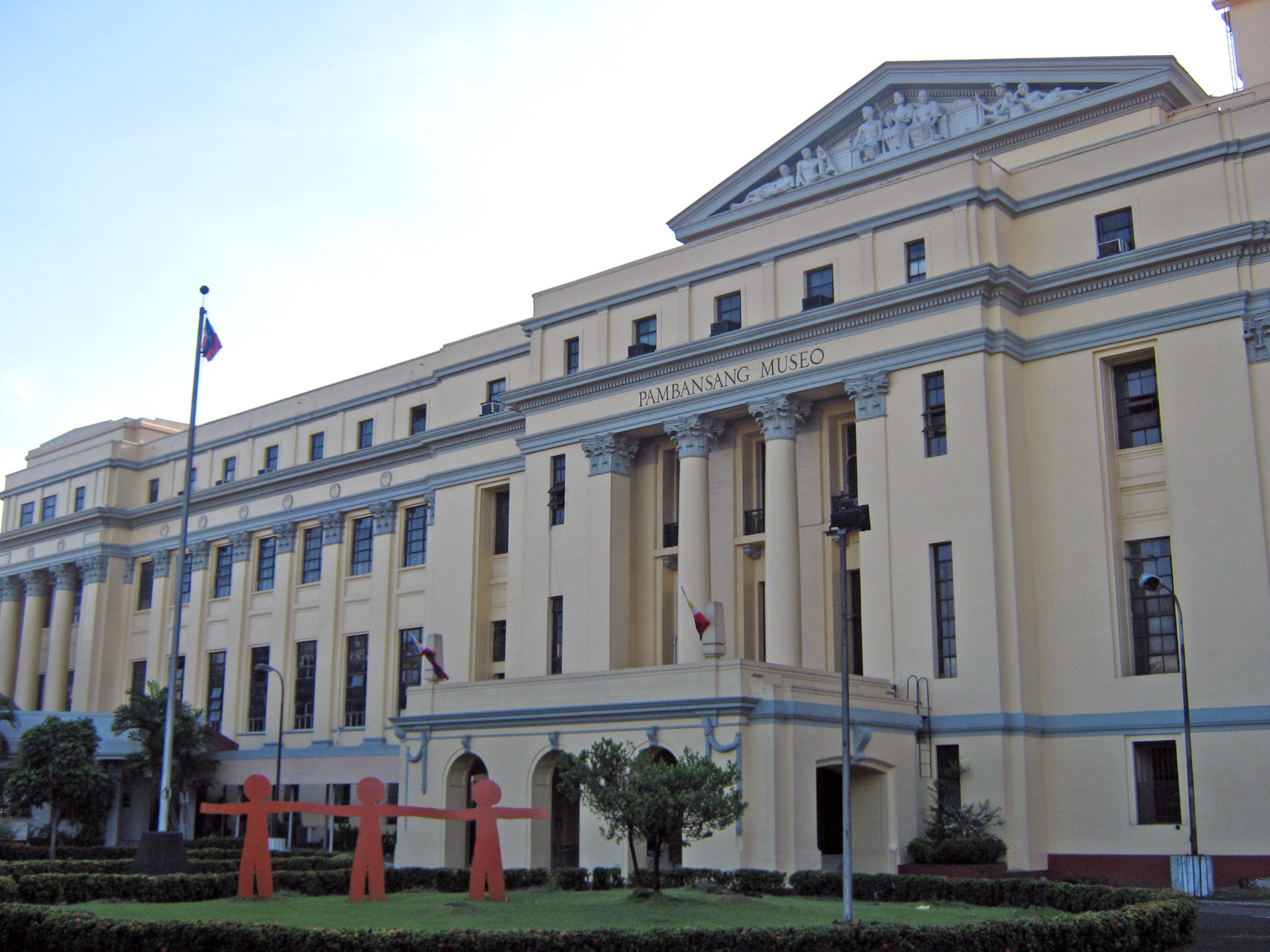
The National Museum of the Philippines, also known as Pambansang Museo, is an institution established by the government of the Philippines that conserves the natural and cultural resources of the Philippines. Some of its collections are the Manunggul jar, Juan Luna's Spoliarium, and some items from the San Diego Galleon wreck.
Mandate and Objectives
educational, scientific, and cultural activities in diverse fields of study
The National Museum has a three-dimensional goal covering diverse of fields of knowledge through various educational, scientific and cultural activities. As an educational institution, the National Museum disseminates scientific and technical knowledge in more understandable and practical forms through lectures, exhibitions, interviews and publications for students and the general public.
As a scientific institution, the National Museum conducts basic research programs combining integrated laboratory and field work in anthropology and archaeology, botany, geology, and zoology. It maintains reference collections on these disciplines and promotes scientific development in the Philippines.
As a cultural center, the National Museum takes the lead in the study and preservation of the nation's rich artistic, historical and cultural heritage in the reconstruction and rebuilding of our nation's past and veneration of the great pioneers who helped in building our nation.
Vision and Mission
protecting, preserving and disseminating the legacy of the Filipino people
The existence of the National Museum is anchored on the basic philosophy that the Filipino nation is kept unified by a deep sense of pride in its own identity, cultural heritage and nature patrimony. The national identity of the Filipino must be developed and enhanced, while imbibing the spirit of nationalism and strong commitment in the protection and dissemination of its legacy.
The National Museum is envisioned as the premier institution and repository of our heritage, and as an exciting, informative, and enjoyable place to visit – a place that inspires people to learn from our traditions so as to help shape a better future.
The National Museum is also dedicated to the mission of collecting, preserving, studying, interpreting and exhibiting the cultural and natural history specimens of the Philippine, from the historic times to the present, albeit the diversity of their cultural origins.
Accommodation
- Bayview Park Hotel - Ermita, Manila
- Centara Hotel Manila - Malate, Manila
- Century Park Hotel - Malate, Manila
- Diamond Hotel Manila - Malate, Manila
- G Hotel Manila by Waterfront - Malate, Manila
- Hotel H20 Manila - Rizal Park, Manila
- Hyatt Hotel and Casino Manila - Ermita, Manila
- Manila Hotel - Rizal Park, Manila
- Pan Pacific Manila - Malate, Manila
- Ramada Manila Central - Binondo, Manila
- The Bayleaf Intramuros - Intramuros, Manila
- Waterfront Manila Pavilion - Ermita, Manila
Getting around the Manila City
Manila is the major city in the Philippines. Tourists can go around Manila in many options. Buses, FXs, jeepneys, taxis, tricycles, and pedicabs are available as a mode of transportations in the city. The city is also serviced by the Manila Light Rail Transit System, popularly known as LRT, as distinct from the MRT in other parts of Metro Manila.
Calesas are still used in the streets of Binondo and Intramuros, but mostly for tourists. Which mode of for-hire used depends upon the distance to be traveled, the cost, and the width of the streets.
The Port of Manila, located in the vicinity of Manila Bay, is the chief seaport of the Philippines. The city is also served by the Pasig River Ferry Service which runs on the Pasig River.
The city is served by the Ninoy Aquino International Airport and Diosdado Macapagal International Airport.










